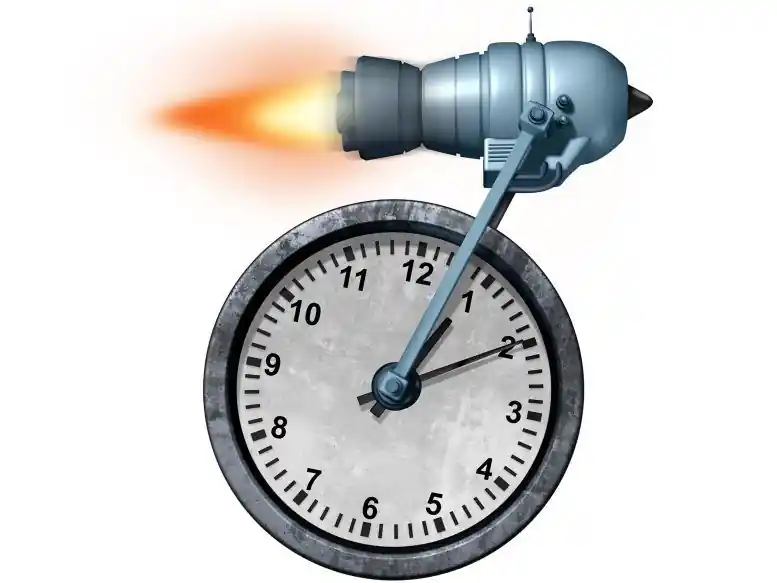
Novel Interferometric Technique Measures Time Delays with Zeptosecond Resolution
The movement of electrons inside molecules is extremely fast, taking only a few attoseconds (a unit of time equal to one billionth of a billionth of a second) for them to jump from one atom to another. This is such a short amount of time that it would be almost impossible to observe with the naked eye, even if you were to blink millions of billions of times. As a result, it is very challenging to measure these ultrafast processes.
Researchers have recently developed a new method called interferometric technique, which allows them to measure time delays with zeptosecond resolution (a unit of time even shorter than an attosecond, equal to one trillionth of a billionth of a second). This work was carried out at the Australian Attosecond Science Facility and the Centre for Quantum Dynamics of Griffith University in Brisbane, Australia, and was led by Professor Robert Sang and Professor Igor Litvinyuk.
Using this new technique, the researchers were able to measure the time delay between extreme ultraviolet light pulses emitted by two different isotopes of hydrogen molecules (H2 and D2) when they interact with intense infrared laser pulses.
The researchers found that the time delay between the two types of hydrogen molecules was less than three attoseconds (a unit of time equal to one quintillionth of a second) long and was caused by slightly different movements of the lighter and heavier nuclei.
This study has been published in Ultrafast Science, a journal specializing in research on ultrafast phenomena.
The lead author of the study, Dr. Mumta Hena Mustary, explains that the team was able to achieve such precise time resolution using an interferometric measurement, which involves overlapping the delayed light waves and measuring their combined brightness.
The light waves used in the study were generated through a process called high harmonic generation (HHG), which occurs when a molecule is exposed to intense laser pulses and an electron is removed from the molecule by the laser field. The electron is then accelerated by the same field and returns to the ion, releasing energy in the form of extreme ultraviolet (XUV) radiation. The intensity and phase of the XUV HHG radiation are sensitive to the exact dynamics of the electron wave functions involved in this process, and different atoms and molecules emit HHG radiation in different ways.
While it is relatively easy to measure the spectral intensity of HHG radiation using a grating spectrometer, it is much more difficult to measure the phase of the HHG radiation, which contains important information about the timing of various steps in the emission process.
To measure the phase of HHG radiation, researchers often use a method called interferometric measurement, which involves creating two replicas of the wave with a finely controlled delay and making them overlap (or interfere) with each other. The way in which the waves interfere with each other (constructively or destructively) depends on the delay and the relative phase difference between them.
An interferometer is a device that is used to perform interferometric measurements. However, it is difficult to build an interferometer for XUV light, as it is challenging to produce and maintain a stable, known, and finely tunable delay between two XUV pulses.
The researchers at Griffith University were able to overcome this challenge by taking advantage of a phenomenon called the Gouy phase, in which the phase of a light wave is shifted in a specific way when it passes through a focus.
For their experiments, the researchers used two different isotopes of molecular hydrogen, which are the simplest type of molecule and differ only in the mass of their nuclei. One isotope, called H2, is made up of protons, while the other, called D2, is made up of deuterons. Both isotopes have the same electronic structure and energies.
Due to their larger mass, the nuclei in D2 molecules move slightly slower than those in H2 molecules. This difference in nuclear motion affects the dynamics of the electron wave functions during the HHG process, resulting in a small phase shift (ΔφH2-D2) between the two isotopes.
This phase shift is equivalent to a time delay (Δt) between the two isotopes, which can be calculated by dividing the phase shift by the frequency (ω) of the XUV wave. The researchers at Griffith University measured this emission time delay for all the harmonics observed in the HHG spectrum and found that it was nearly constant and slightly below 3 attoseconds.
To help understand their results, the Griffith researchers were supported by theorists at Shanghai Jiao Tong University in China, led by Professor Feng He.
The scientists at Shanghai Jiao Tong University used advanced theoretical methods to comprehensively model the HHG process in the two isotopes of molecular hydrogen, taking into account all degrees of freedom for nuclear and electronic motion at various levels of approximation.
Their simulation accurately reproduced the experimental results, which gave the researchers confidence that the model captured the most essential features of the underlying physical process. They were able to adjust the model’s parameters and levels of approximation to determine the relative importance of various effects.
While the actual dynamics of the HHG process is quite complex, the researchers found that two-center interference during the electron recombination step is the dominant effect.
Because hydrogen is the simplest molecule and can be modeled with high accuracy, it was used in these proof-of-principle experiments to validate the method. In the future, this technique can be used to measure ultrafast dynamics in various light-induced processes in atoms and molecules with unprecedented time resolution.